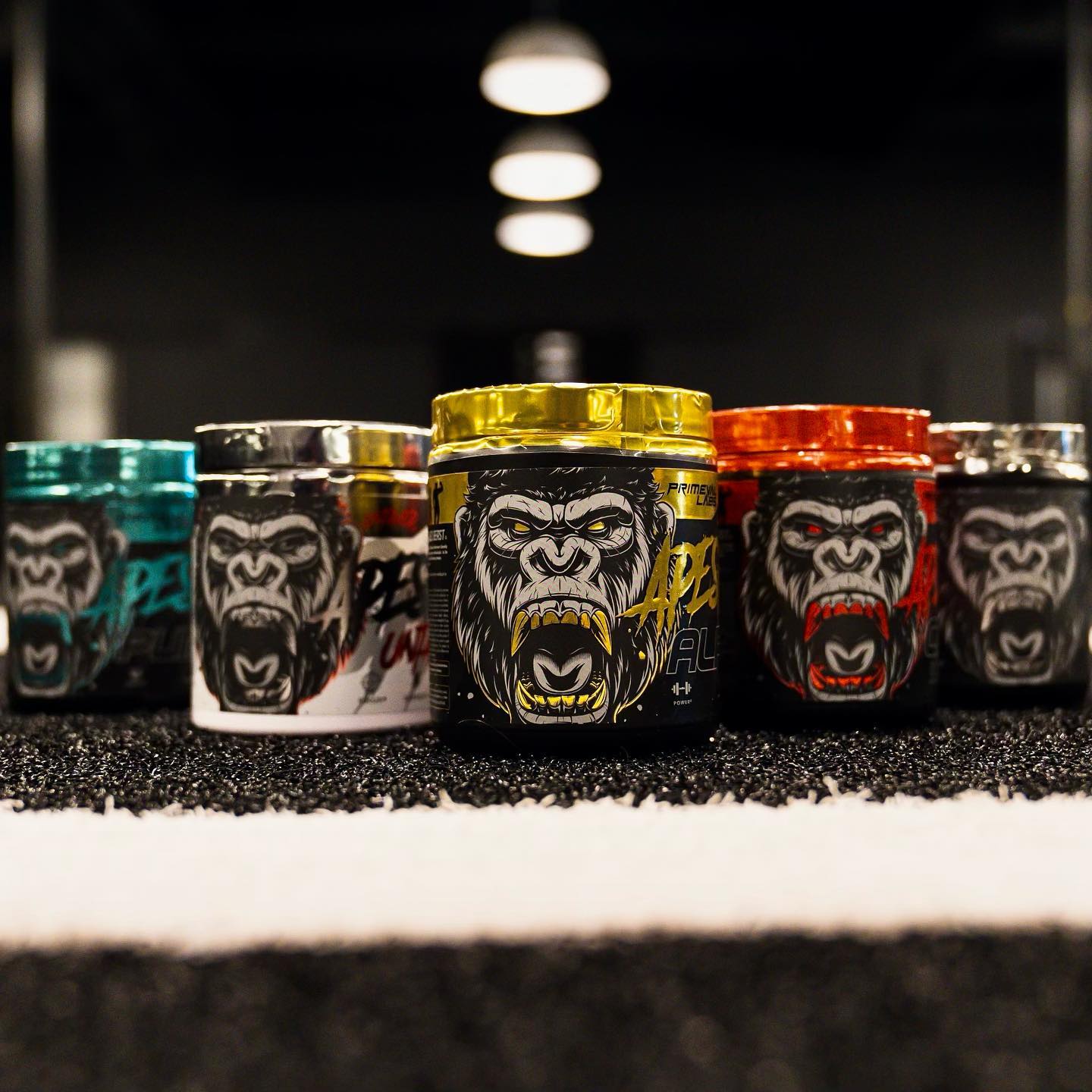
The Primeval Labs Ape Sh*t Pre Workout series has its next release. Today we're talking about the green one - Pumps!
Welcome, Primeval Labs fans! When it comes to the Primeval lineup of pre workouts...
- You've seen the original Ape Sh*t Pre Workout, clocking in at 275 milligrams of caffeine.
- You've seen the Ape Sh*t Untamed RTD bottle (350mg caffeine).
- You've seen Ape Sh*t Cutz for weight loss support (300mg caffeine + yohimbe).
- You've seen Ape Sh*t Alpha for testosterone support (350mg caffeine).
And you've even seen Ape Sh*t Test, a testosterone booster that's the first non-pre-workout supplement in the series.
If you've been following this industry for any amount of time, you'll know that something's been missing from the menu...stimulant-free pumps! But now they've arrived, and you can probably guess the name:
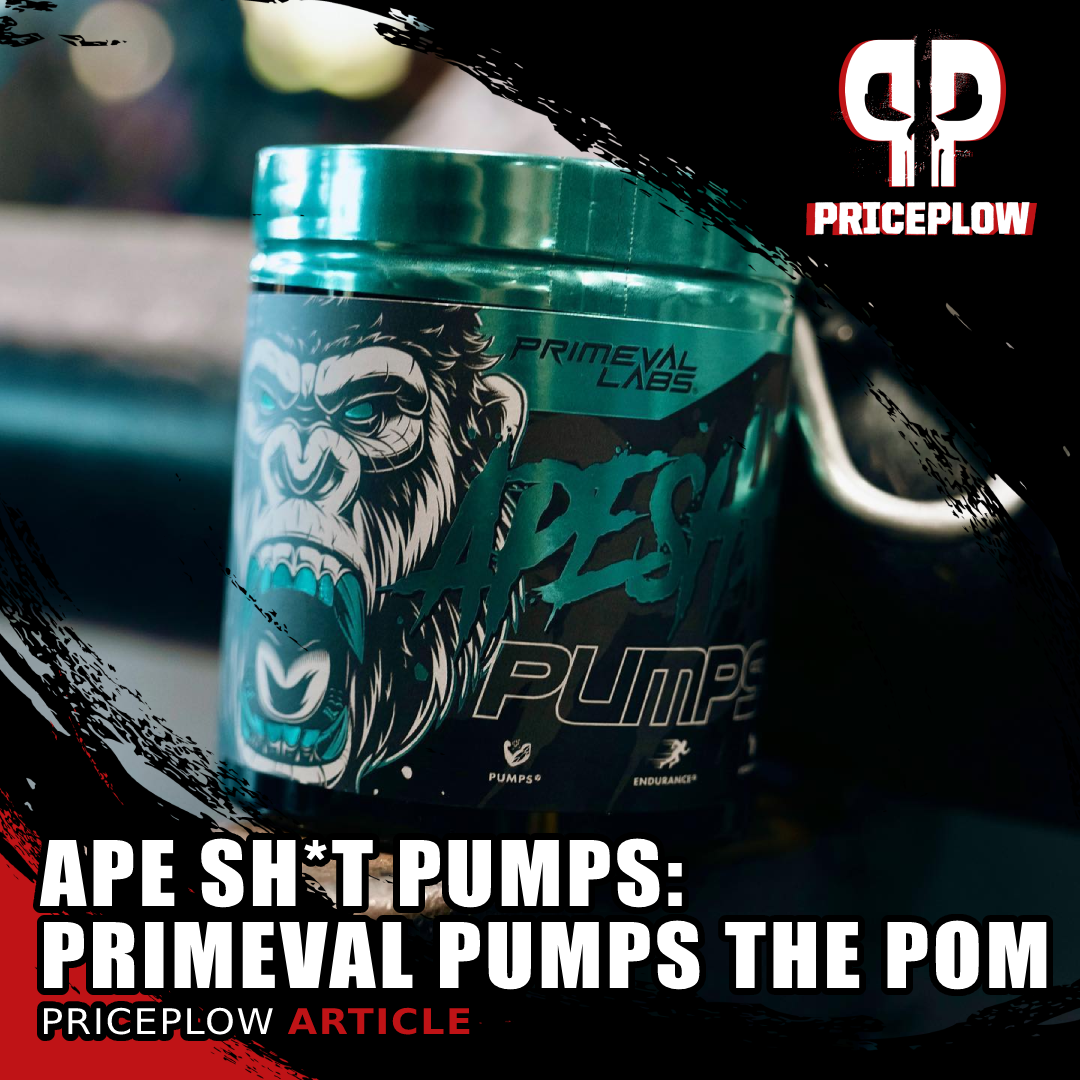
Introducing Primeval Labs Ape Sh*t Pumps: A stimulant-free pre workout supplement powered by a large dose of pomegranate at the end of the label - read this one all the way through!
Primeval Labs Ape Sh*t Pumps is upon us
Ape Sh*t Pumps is a stimulant-free pre workout supplement brought to enhance the nitric oxide induced bloodflow you bring to your workout, with an added kick of endurance from a full dosage of beta alanine and taurine.
In addition, we have a pomegranate extract, which may bring some added anabolic properties. It's all covered below, but check out our PricePlow-powered deals first and get signed up for those Primeval Labs news alerts, we're expecting big things from the very-untamed brand:
Primeval Labs Ape Sh*t Pumps – Deals and Price Drop Alerts
Get Price Alerts
No spam, no scams.
Disclosure: PricePlow relies on pricing from stores with which we have a business relationship. We work hard to keep pricing current, but you may find a better offer.
Posts are sponsored in part by the retailers and/or brands listed on this page.
Ape Sh*t Pumps Ingredients
In a full two-scoop serving (11.6 grams), you get the following list of ingredients:
-
L-Citrulline - 4000 mg
You've got to expect this one in a powdered pump-specific supplement -- a full 4 gram dose of L-Citrulline to improve nitric oxide production! While we already have citrulline in the RTD and original Ape Sh*t products, it's not in the Alpha nor Cutz versions, so you can start to strategize where to stack this. Adding to Cutz or Alpha will bring serious pumps into the fold, while adding to the RTD or original pre-workout will put them over the top!
How L-citrulline works
L-citrulline is an amino acid found in watermelon[1-3] that gets converted to another amino acid, L-arginine, which is the precursor to the nitric oxide (NO) molecule.[4] This leads to a vasodilation effect, whereby the blood vessels (vaso) relax and open up (dilate), leading to improved blood flow.[5,6] Along with great benefits like lower blood pressure and improved nutrient delivery, that blood flow brings muscle pumps when working out.
Science has reliably demonstrated that using L-citrulline itself works out better than arginine itself,[5] because the digestive system breaks down arginine before it can get converted to nitric oxide in what's known as the "first pass effect".[7-10] Additionally, high-dose arginine wasn't good because of awful GI issues[11,12] - citrulline supplementation doesn't have that problem, thankfully.
The added citrulline benefits
Meet the Apex Predator Pre-Workout: Primeval Labs Ape Sh*t Alpha. However, that one doesn't have citrulline, so the stack will be very fierce
Beyond incredible pumps from all that nitric oxide induced blood flow, research has also shown additional downstream benefits, ranging from better ATP production (cellular energy), increased work output, and better recovery capabilities and less soreness.[13-16]
These benefits of course come with proper nutrition, which is why Primeval Labs has IsoLit whey protein isolate and the incredibly popular EAA Max intra workout supplement, and your local rancher should hopefully still have steaks.
Finally, it's worth noting that this dose is solid - a clinically-verified dosage is 3 grams,[17] and Primeval Labs is yielding even more than that.
-
Beta Alanine - 3200 mg
Found in every Ape Sh*t series supplement, Primeval Labs goes big on the endurance-boosting ingredient with a full clinical 3.2 gram dose of beta alanine. While citrulline serves as the precursor to arginine, beta alanine serves as one of the precursors to carnosine (after combining with the EAA L-histidine).[18,19] We love this effect because carnosine helps buffer lactic acid in muscles, which researchers theorized would increase endurance.
After numerous studies, those research theories became hardened science -- two major beta alanine meta analyses showed that the ingredient does in fact boost athletic endurance in numerous forms of sports.[20,21]
The first meta analysis, published in 2012, analyzed 15 studies on 360 different participants and showed that beta alanine consumption led to significant improvements in exercises ranging from 1-4 minutes.[20] The second study, published in 2015, expanded the scope even further, using 40 studies on 1461 different participants -- it showed that beta alanine significantly increased endurance in exercises anywhere from 30 seconds to 10 minutes long![21]
However, beta alanine isn't without its "controversy" - many users get a tingling sensation known as paresthesia when taking it. However, a large safety study declared that "β-alanine supplementation within the doses used in the available research designs, does not adversely affect those consuming it."[22]
While beta alanine may not be a direct "pump ingredient", it does promote more volume - which, if taken advantage of, will lead to greater pumps. However, there's even more to consider here for those who stack it with any of the other pre-workouts in this series:
Double dosing beta alanine?!
We're interested in section (B) here, where beta alanine alone shows great results compared to placebo.[21]
Here's the part we'll say out loud - if you stack Ape Sh*t Pumps with any other pre-workout in this lineup, you're going to get a double dose - up to 6.4 grams if you fully dose both products. That's enough to bring some serious tingle-factor - but it leads us to even more research. A couple of studies show that taking 6.4 grams of beta alanine per day can significantly boost muscle performance and work capacity - with work capacity boosts of 16.9% and endurance increases by 14.9%.[23,24]
Are those types of gains worth it for those tingles? For many of you Primeval savages, we know the answer is a resounding yes.
-
Agmatine Sulfate - 1000 mg
The original Ape Sh*t pre workout has a 750 milligram dose, but Primeval kicks it up a tick with 1000 milligrams of agmatine sulfate. This one works on the other end of L-arginine -- it's an arginine metabolite that works as an arginase inhibitor.[25] By adding agmatine to Ape Sh*t Pumps, Primeval Labs is helping to prevent the breakdown of our citrulline-generated arginine, leading to longer-lasting nitric oxide production since the arginine will be around longer to make that happen.
Beyond this "defensive" measure, however, agmatine has been shown to also boost nitric oxide synthase in endothelial cells,[26] so we may also get some synergy with citrulline in terms of added NO production directly.
Finally, agmatine functions as a novel neurotransmitter that may even have mood-boosting effects.[27] There's a lot more to this side of the story, but the point is that it should enhance the feel-good effects of Ape Sh*t Pumps in more ways than one!
-
L-Taurine - 1000 mg
Now that we've got the nitric oxide angle mostly taken care of (there's a bit more support coming from the final ingredient shown below), we can get into water and cell hydration to promote endurance and hydrating pumps. An effective way to accomplish this is with taurine, the osmolyte ingredient that provides massive amounts of mitochondrial health support throughout the entire body.[28]
Of some of the many benefits from taurine, we get an incredible boost of endurance, as shown from a 2018 meta-analysis that looked at ten different studies which analyzed taurine use and its effects on endurance.[29] The researchers concluded that when doses of taurine ranged from 1 to 6 grams per day (in single doses and for up to 2 weeks) across numerous subjects, it significantly increased overall endurance performance.
Primeval Labs was one of the first companies to make EAAs taste great with EAA Max, and now they've updated the labels for a bold new look
The added endurance could lead us to another "indirect pump" discussion like with beta alanine, but taurine provides more than just that. As an osmolyte, it assists with water transfer across cells, and can promote osmotic cell swelling in mammals.[30] This can drive what we call "water pumps", bringing a unique dimension alongside the nitric oxide pumps -- so long as you drink enough water with the supplement.
Additionally, taurine helps limit oxidative stress (further contributing to the endurance effect), improves calcium signaling (thereby improving muscle contractions), and even helps with better fat digestion.[29,31-33]
And if that's not enough, it can also induce an added kick of nitric oxide production[33] and cognitive support,[32] although these aren't as noticeable as what we'll get from other ingredients. Taurine's generally here for the endurance and cell hydration.
-
Pomegranate Extract (punica granatum) (hull) - 300 mg
A new inclusion to the Ape Sh*t series, pomegranate extract provides a wealth of benefits that can improve our workout and fitness lives.
Figure 3 from the study shows that lifters using pomegranate juice had significantly lower RPE than placebo.[34]
For the sake of pumps, we know that pomegranate juices and extracts are highly supportive of increased nitric oxide levels,[35-41], yielding improved blood flow[39] and reliably lowering blood pressure both in the short-term and over time.[42]
Animal studies have shown that both pomegranate fruit extract and juice significantly lower vascular inflammation, and increase both plasma nitrite and nitrate levels.[36] Of the mechanisms attributed to this, researchers posit that the fruit's polyphenol-rich antioxidants (oleanolic acid, ursolic acid, and gallic acids) are key players[37] in inducing endothelial nitric oxide (eNOS) expression.[38]
Going above and beyond, the fruit can also work in a defensive method - by protecting nitric oxide against oxidative destruction![43]
Long story short, studies in humans have shown that pomegranate extract "is ergogenic for intermittent running, eliciting beneficial effects on blood flow."[39] In addition, research has shown that pomegranate juice improves recovery and reduces soreness.[34] Like some other nitric oxide boosters, it can also reduce oxygen requirements when training.[40]
Anabolic properties of certain pomegranate extracts
Primeval Labs Ape Sh*t Test is the first non-pre-workout supplement in the series, so it can be stacked with the others to amplify test!
Now, depending on what Primeval Labs is extracting out of the pomegranate, we could also talk a bit about muscle-building potential. We've seen one component, ellagic acid, lead to greater production of urolithin B, which has been shown to have anabolic properties that can boost mTOR signaling and muscle protein synthesis![44]
Meanwhile, we've also seen incredible anabolic effects from another constituent mentioned above, ursolic acid.[45]
We're not sure how much ellagic acid or ursolic acid is in this extract, but a 300 milligram pomegranate dose is more than we see in many muscle-building supplements that utilize this pathway -- so we're confident we're getting a non-zero amount.
Make no mistake, we don't see enough pomegranate in the sports nutrition sector, and we consider this to be Ape Sh*t Pumps' x-factor.
Flavors Available
Dosage and Stacking
If taking this solo, you'll get to a clinical dose of L-citrulline at 1.5 scoops. We've covered several of the stacking angles here, as discussed in the beta alanine section. But if you take it solo, we recommend the full two scoop dose.
One added note is that if you're looking to go all in on pumps, don't forget about VasoGorge capsules, which have a full clinical 1.5 grams of Nitrosigine as well!
Go Ape, Get Pumped
We're not going to say that the Ape Sh*t series is complete, because there's always more ways to go Ape, but this was the logical next step in the recent line of pre-workout launches.
As discussed at the end of the ingredients section, we believe pomegranate is the secret weapon in this one. It may be the lowest-dosed ingredient in the formula, but it's far better dosed than other formulas we've seen with the ingredient, and the effects are relatively unheralded. If you notice an extra gear here, and you're familiar with the other ingredients inside, consider digging deeper into pomegranate and its constituents -- and their incredible downstream effects.
When Primeval Labs released Ape Sh*t Test, they made a point that going ape isn't just about pre-workouts. We're hoping to see the line continue to expand, and PricePlow will be here to cover it all:
Primeval Labs Ape Sh*t Pumps – Deals and Price Drop Alerts
Get Price Alerts
No spam, no scams.
Disclosure: PricePlow relies on pricing from stores with which we have a business relationship. We work hard to keep pricing current, but you may find a better offer.
Posts are sponsored in part by the retailers and/or brands listed on this page.
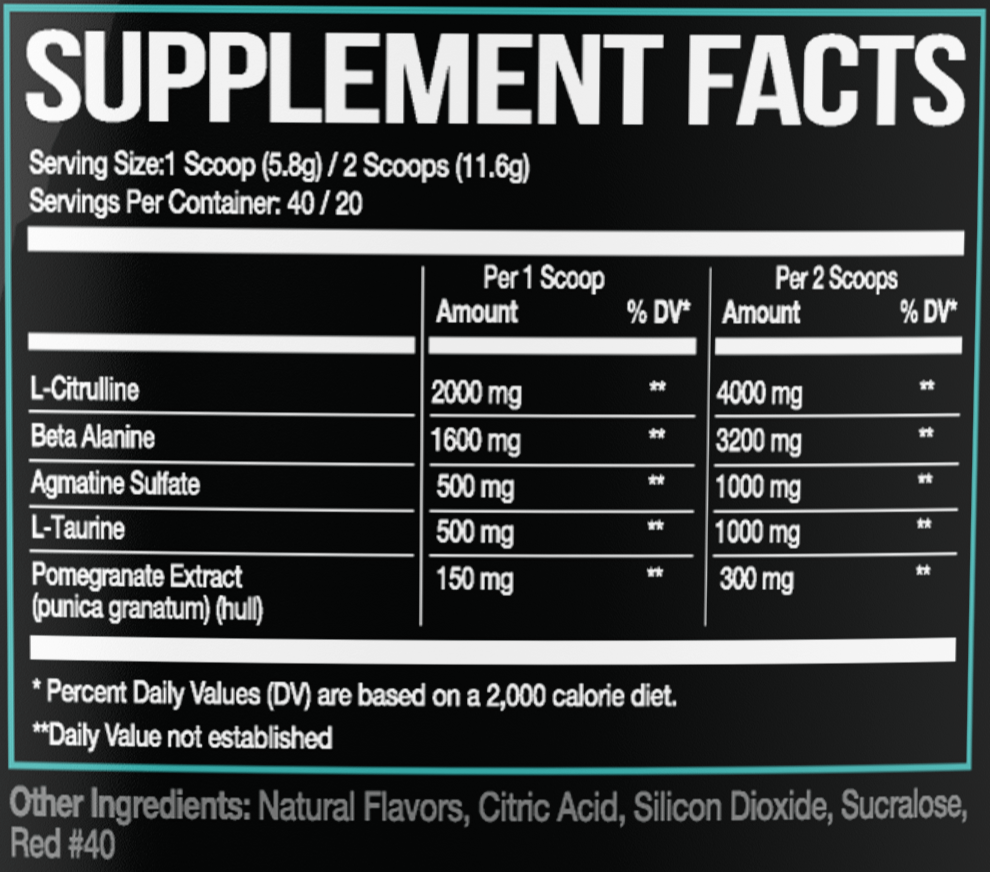

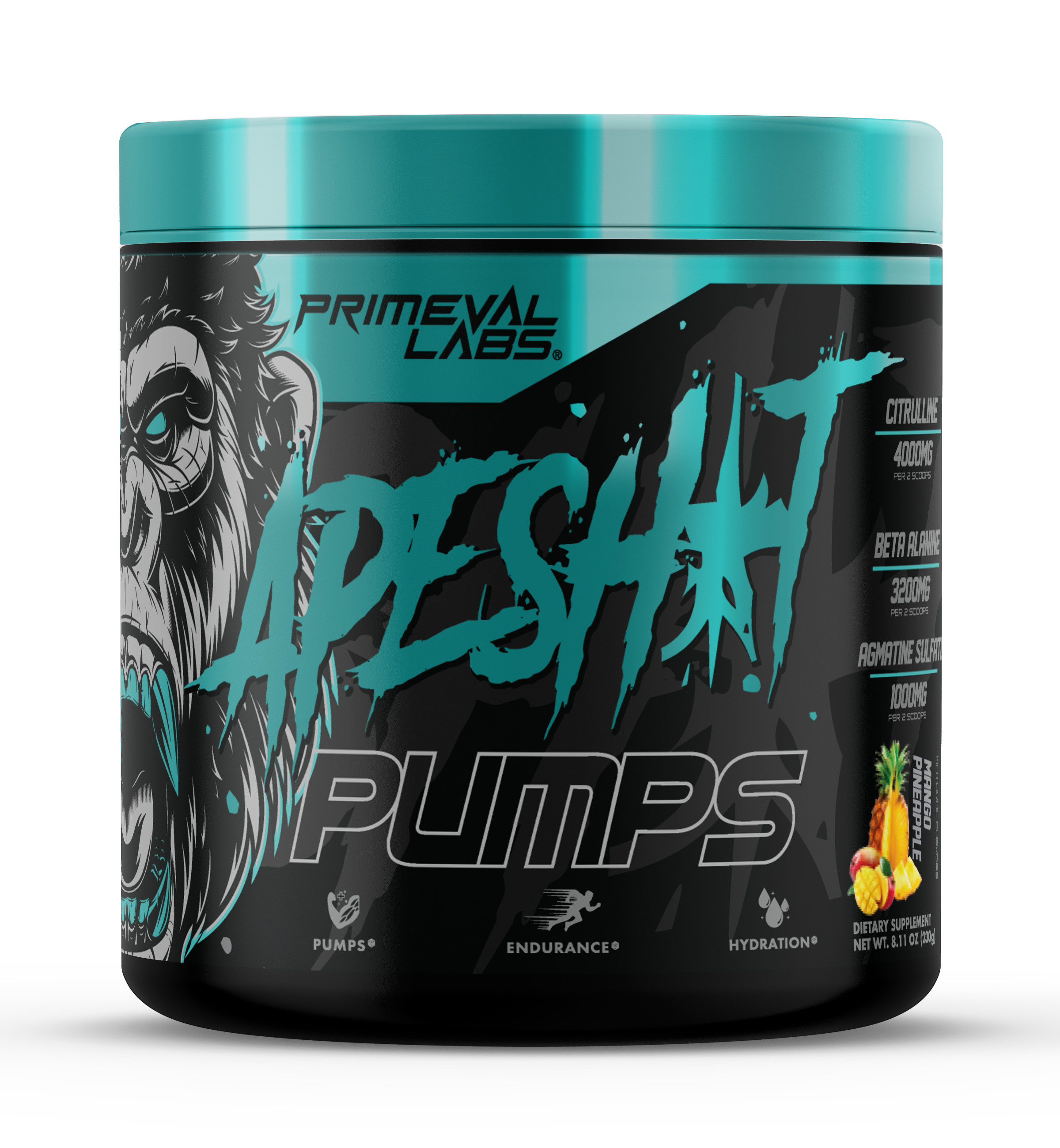
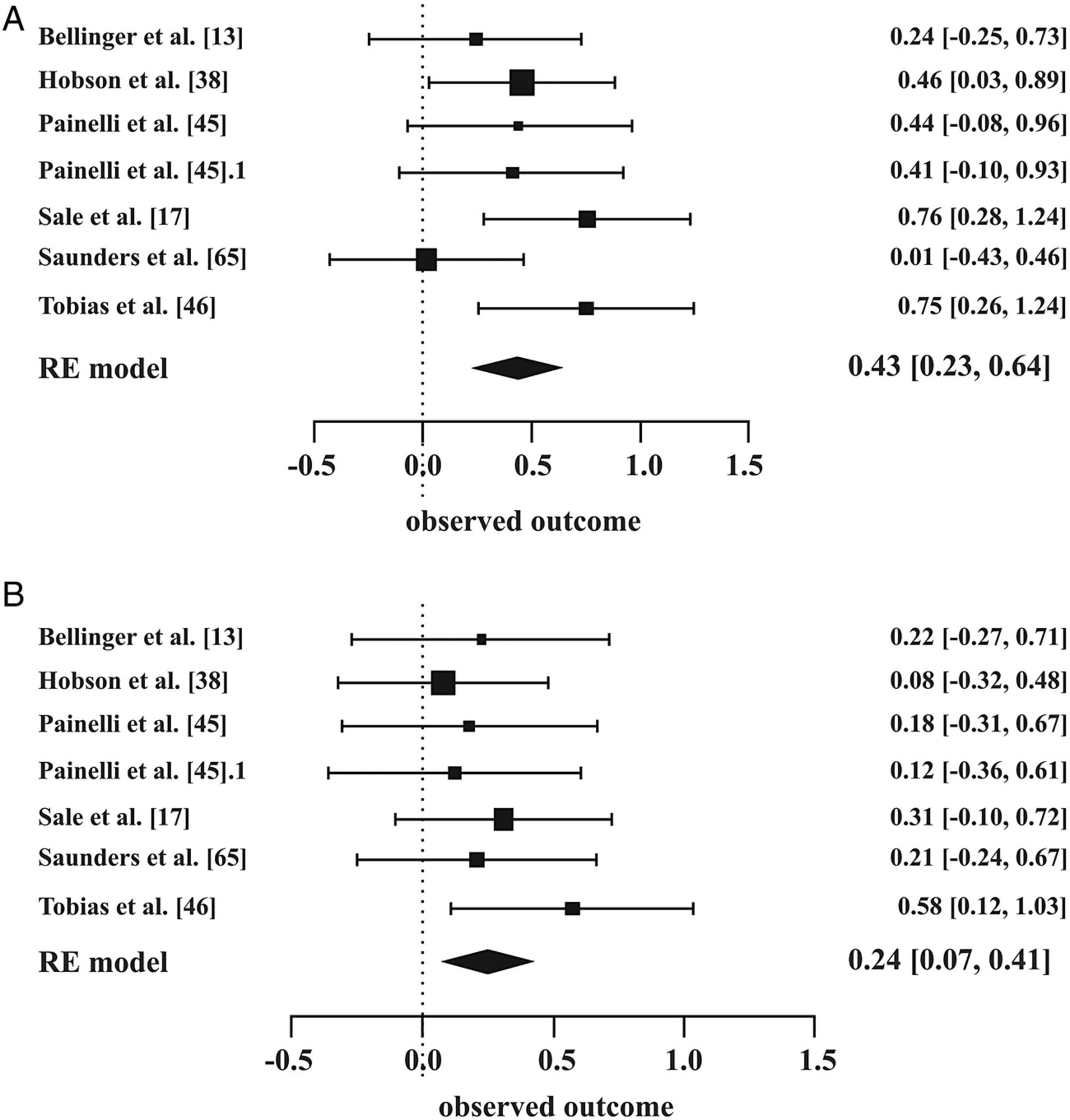
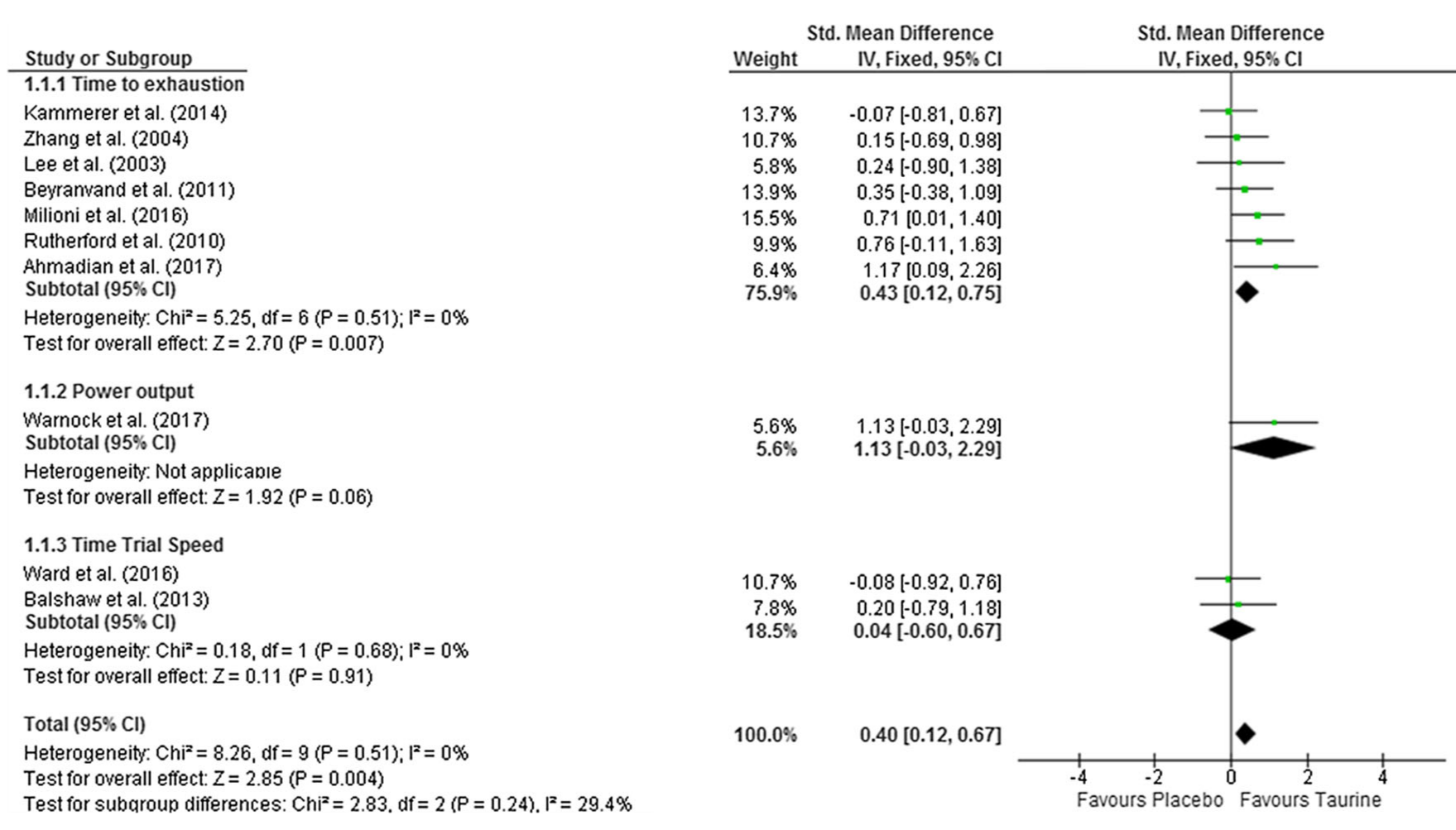
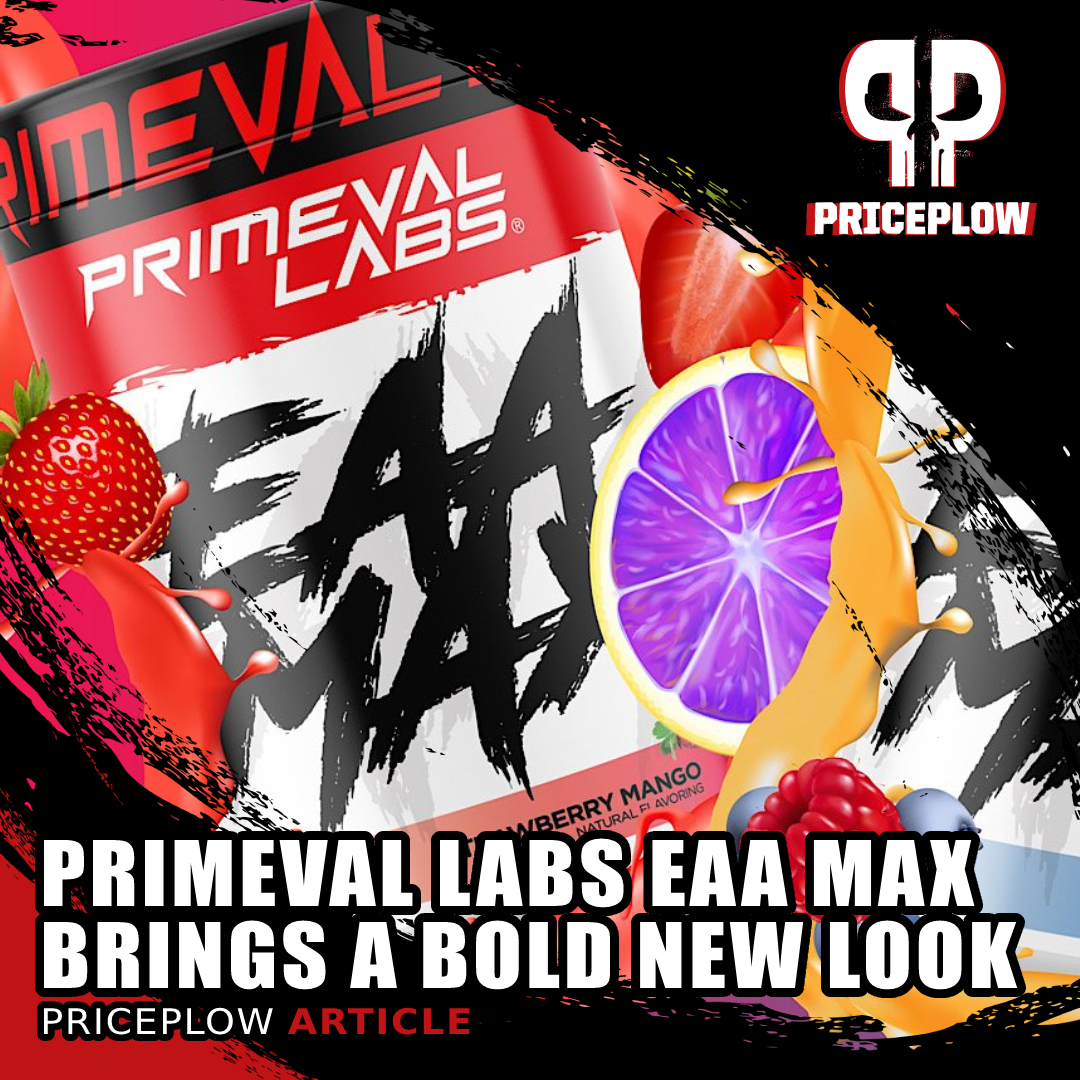
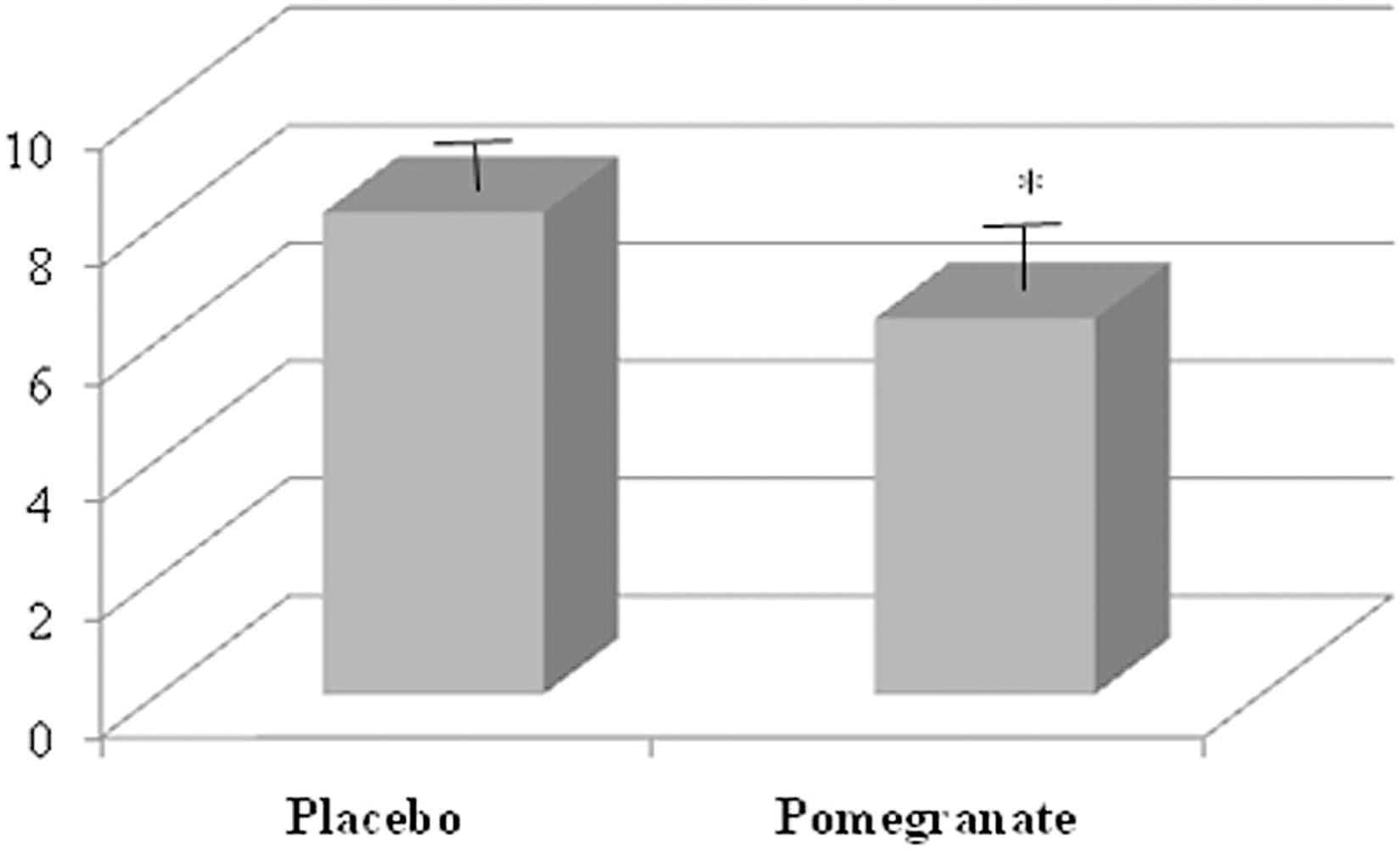
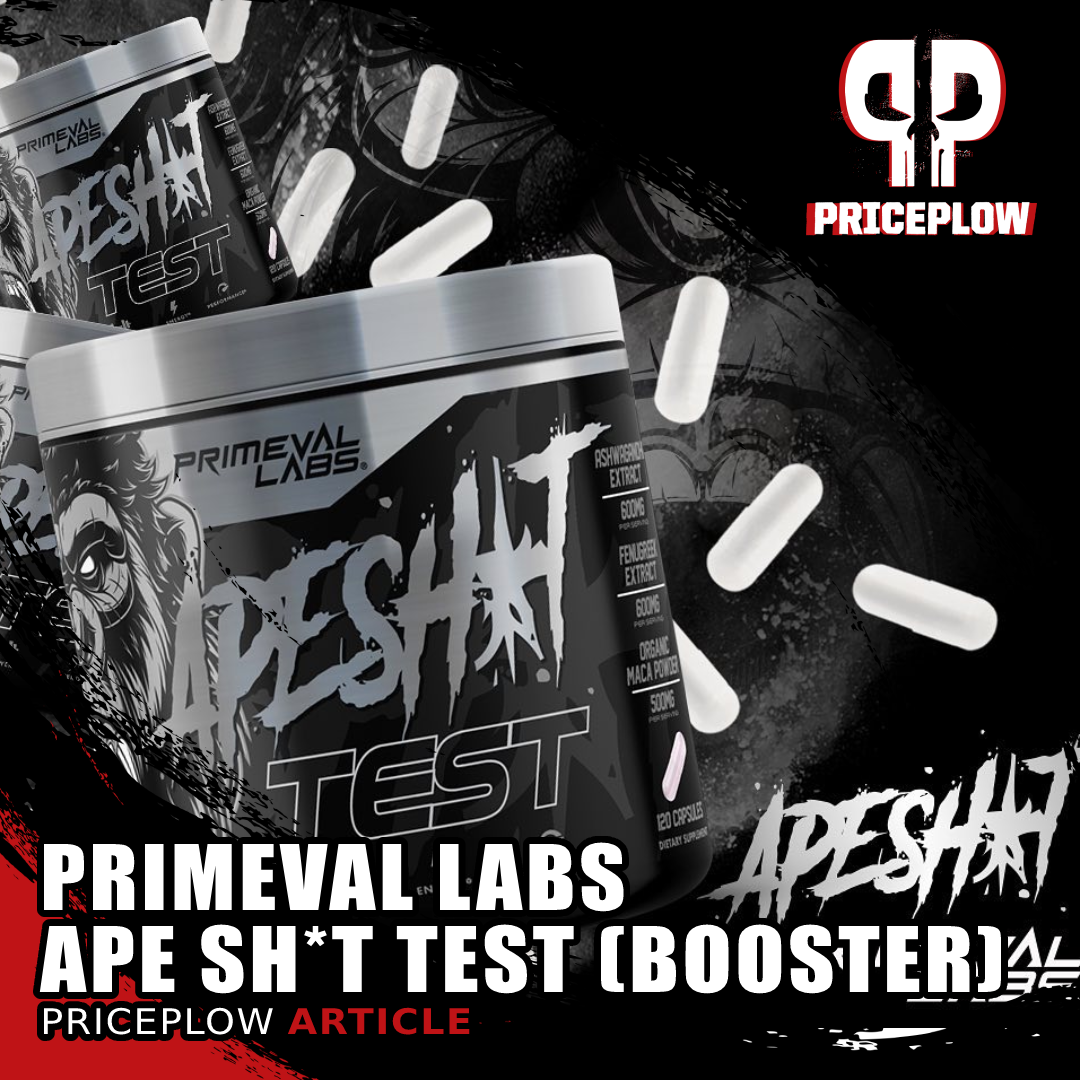
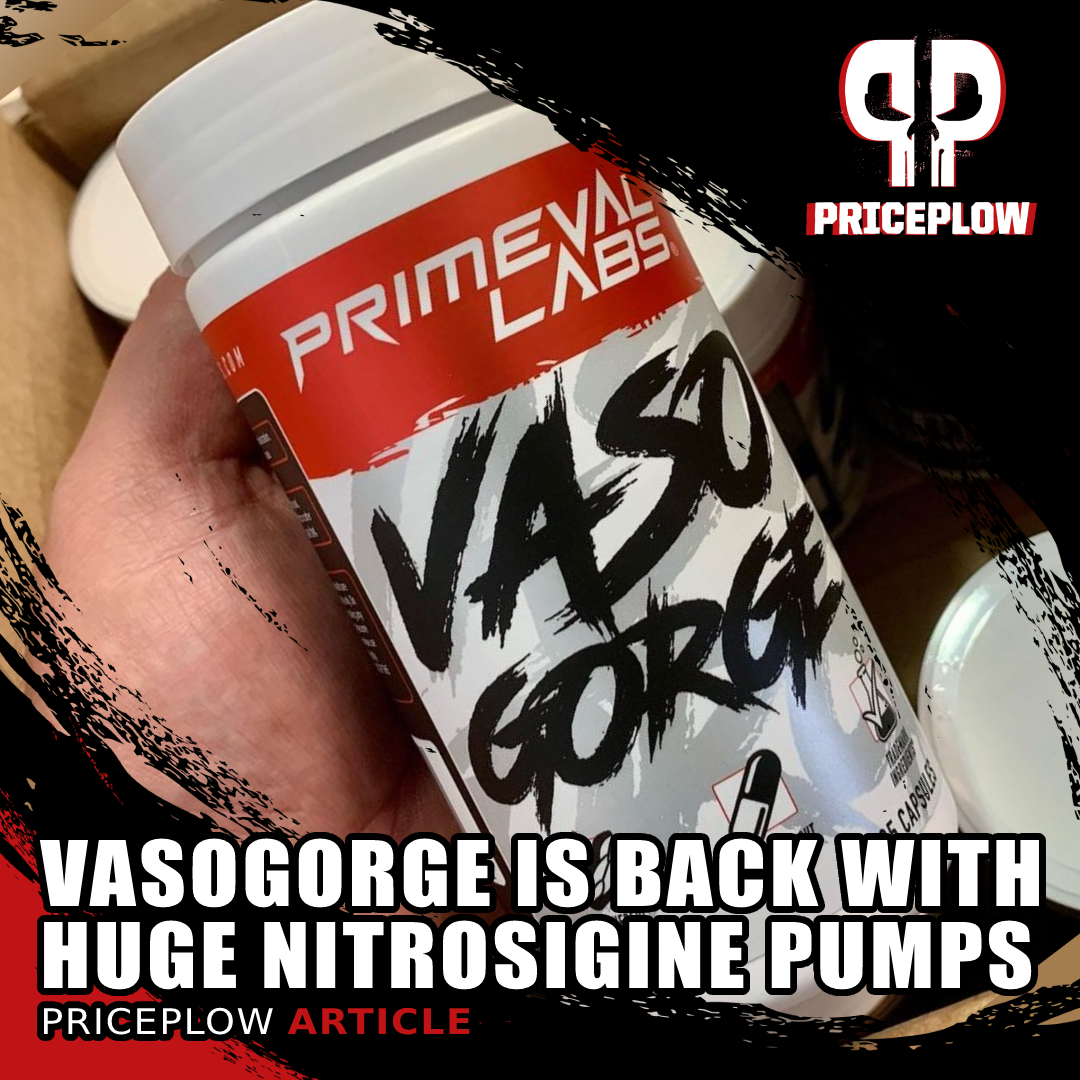
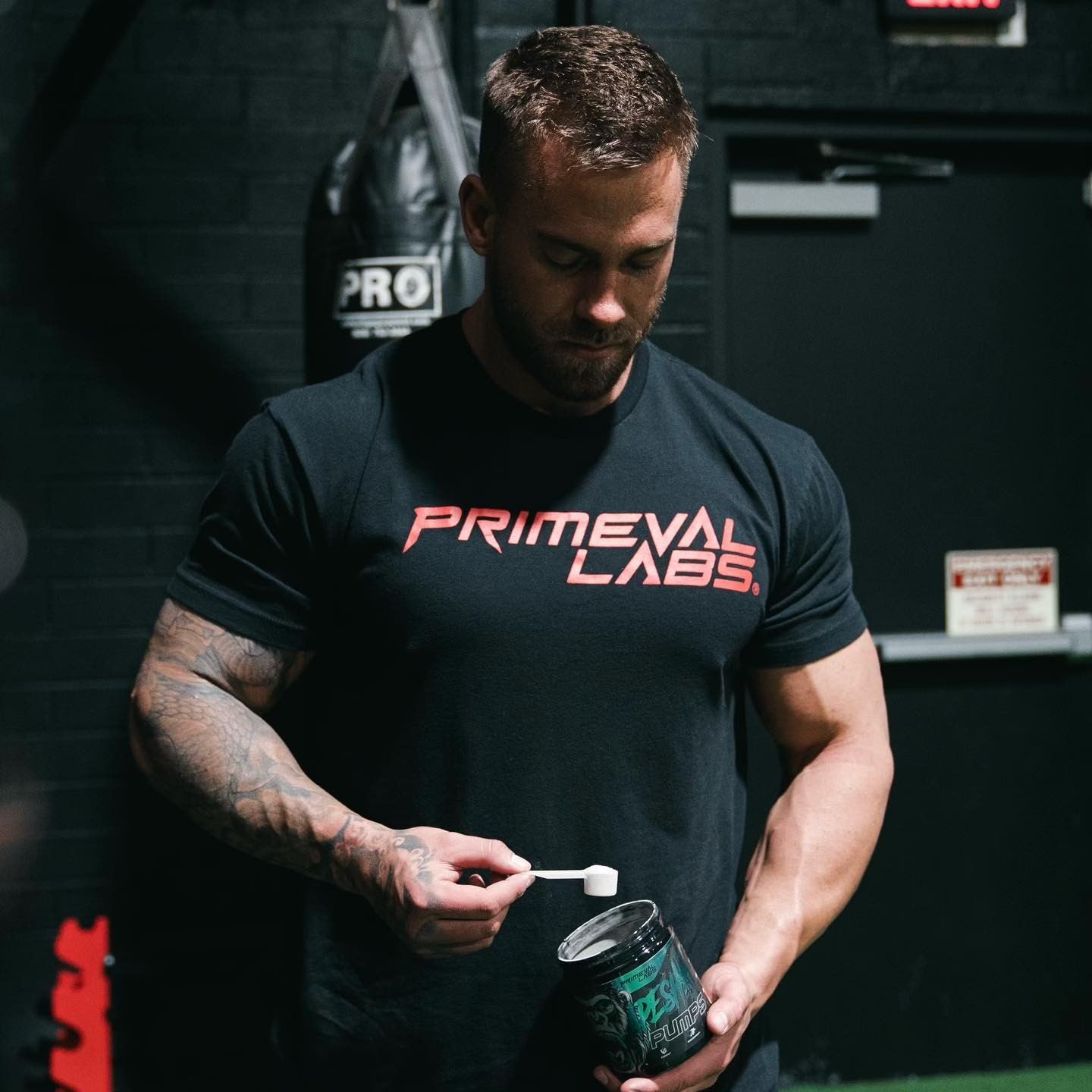


Comments and Discussion (Powered by the PricePlow Forum)